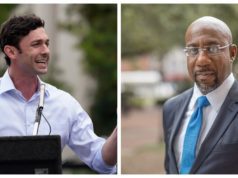This story was produced by a student in the Madison365 Academy, Madison365’s journalism training program.
The first version of a 15-point-plan to reduce violence in Madison was inspired by a sharp increase in violence in the Madison community. In April and into May, three killings back-to-back-to-back motivated Boys and Girls Club of Dane County CEO Michael Johnson to bring community leaders together to begin to craft a community response. The series of homicides began April 19, when Martez Moore, a 30-year-old man, was shot after an altercation in a parking lot of a far West Side bar. Three weeks later Darius Haynes, a 38-year-old Madison resident, was killed while he sat in his car at gas station on Verona Road. Then the next day 28 year old Elijah James Washington was shot and killed at a gas station in the Town of Madison.
Johnson’s plan aimed to combat racial disparities in education, employment and health, but it also aims to improve community cooperation with police. Johnson told the Wisconsin State Journal in May, “When you look at the disparities that exist in this community — disparities in education, mass incarceration — if we don’t begin to address these issues, it’s going to be a long summer.”
The initial 15 Point Plan has been revised since its debut because institutions like the Interruption Coalition, the City Council, and others have joined forces with Johnson to create a plan that caters more to the needs of the community — and a plan that contains specific costs and timelines.
Pastor Caliph Muab-el, who helped craft the plan, says, “The plan requires a minimum three million dollars annually, especially if things like the restoration center are going to be implemented.”
The $3 million in expenses are spread across the 15 points with different activities proposed for year 1 (2017) and year 2 (2018).
The first point seeks $240,000 towards the recruitment and training of Peer Support Coaches (PSCs). These coaches would have pre-established trust from the community as well as street credibility, so they could assist young individuals in jeopardy of committing a crime, involved in non-violent criminal behavior, or individuals who have immediately been released from a signature bond for a non-violent crime with tools to adjust back into society with a positive impact.
The second and third points require $290,000 to establish a Peace Program to invite children between the ages of eight and 18 to foster ideas on how to reduce gun violence and to train and recruit more Peer Support Caches to help individuals released from jail adjust back to everyday life.
Points 4 and 5 depend upon $220,000 to increase the number of youth internships in Madison and to create an rewards fund for information that leads to the arrest and conviction of people guilty of homicide.
The sixth and seventh points call for the City of Madison to allow city workers three paid vacation days a year specifically to mentor madison youth, then establish a task force to explore the potential of a Madison Restoration Center with the purpose of being an alternative for individuals who would’ve been taken to jail or a hospital for intoxication, behavioral issues, and mental health issues.
The next points on the plan call for the City of Madison to work with community centers to determine the cost of keeping their centers open later, working with Madison Alternative Policing Strategy to allow non-violent offenders the opportunity to trade their sentence for the ability to attend college and to reduce gun violence by making sure quality mental health services are available to the community, to create a violence prevention strategy that looks into the causes that make people more susceptible to commit violent acts, remove non-violent crimes for people 25 and under from the CCAP online records public record system, provide court advocates for individuals 25 and under in jeopardy of entering the criminal justice system to work towards alternate methods of sentencing for nonviolent offenders, pilot family therapy programs, and work with the Madison Metropolitan School District and Madison-area-Out-of-School-Time.
Most of the expenditures and initiatives require allocations in the 2017 City budget, which will need approval frim the Common Council and Mayor Paul Soglin. Alder Maurice Cheeks, who helped craft the plan, is optimistic.

“The Mayor publicly agreed to the request to include $750,000 to fund our initiative in the next budget that he submits to the City Council this fall,” Cheeks says. “As always, the Council will review and edit the Mayor’s budget to ensure that the priorities of our constituents are reflected in any budget we pass. If he didn’t keep his word to support the plan in his budget, the community would take notice. I am not concerned about that.”
Cheeks says Council approval also seems likely given the response from his fellow Alders. “So far I’ve only heard positive feedback regarding the plan from colleagues, as well as from the public,” he says. “Residents all over the city have expressed appreciation for the proactive and collaborative work to address such important and complex issues as violence prevention and opportunity creation.”
More details, including timelines and budgets, are available here and here.






























